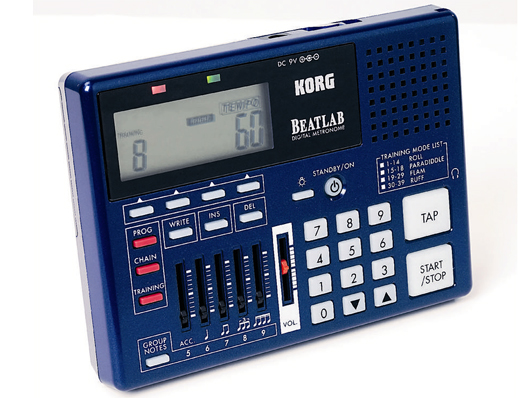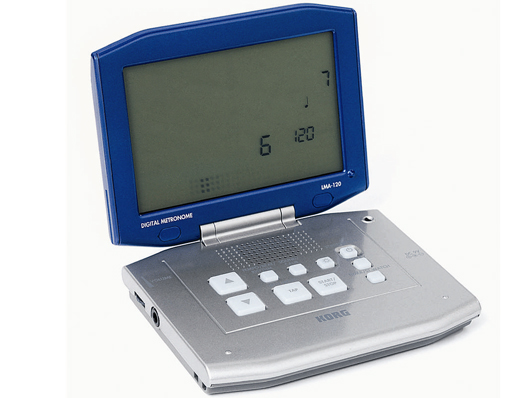Round-up: 4 Korg digital metronomes
Essential tools reviewed and compared

4 Korg digital metronomes
Accuracy and reliability of tempo are more important to today’s drummer than ever. It’s simply expected. Drum machines and computer sequencers abound, but the humble metronome is still useful - some would say indispensible - for practising and learning, for nailing live songs, in rehearsal, gigs and even the studio. Korg offers a wide selection…
The four on review here all have multiple beat patterns and time signatures, combining audio and visual guide cues. All except the Beatlab also have chromatic tuning pitches, which may or may not be useful for drummers. They also all have headphone sockets, although only the Beatlab gives you gig-level volume.
First up: the most versatile of the bunch, Korg’s Beatlab

Korg Beatlab
Way the most versatile, with hundreds of options necessitating a full instruction manual. No baton-style display - instead beats and tempo (30-300 bpm) are indicated by beeps and alternating red/green flashlights.
In training mode, choose from 39 rudimentary patterns with the lights flashing in sync with L (red) and R (green) hand/foot beats. Programme mode allows 24 pattern settings, groupable into eight chains of up to 16 bars. Mini sliders allow for ghost stroke-like dynamics. The stereo headphone output is boosted and can really take your head off.
The only metronome here which accepts a 9V mains adaptor.

Korg MA-30
Loved this handy, pocket-sized device with the best LCD display. Its clear sweeping baton stick is accompanied by a (mutable) blip.
Great for keeping time with, both practising or on the gig. Tap in the tempo in single bpm steps, or hold down the button to zoom 10bpm at a time. Buttons are multi-functional, but intuitive. You get time signatures from one to seven, plus six sub-divisions including triplets and dotted 16ths – 13 rhythms in all. Tempos from 40-208bpm and mono phone socket with rather weak signal.
All that many drummers will need.

Korg KDM-2
A chunky stand-alone unit with a sensuous shape and extensive range of rhythmic options. The LED has no moving stick display so you have to stay in time with the click and blinking light. Four different sounds, including cowbell and woodblock tones.
The cylindrical resonator speaker improves the tone and volume, but the headphone sound is mono and rather weak. There’s a big selector dial for the impressive tempo range of 30 252bpm.
There are also 19 rhythm patterns, from one to nine beats per bar, triplets, quavers, semiquavers, plus, usefully, the four standard clavés.

Korg LMA-120
Coolest and sturdiest looking of the set, like a mini laptop, with a much larger (8cm x 5cm) LCD display with optional backlight. It also has a tempo display with a unique motion resembling a ‘virtual conductor’ with a baton, ie: both up-and-down and side-to-side.
It’s clever but we found it more complicating than helpful, like watching a games screen with an angled bouncing ball. There are just six rhythm patterns, although combined with 0 to 9 beats per bar. There’s also a timer and stop watch function up to 99 minutes.
Stylish but expensive with limited rhythmic options.
For up-to-the-minute drum buyers’ guides, reviews and gear round-ups, check out Rhythm Magazine.